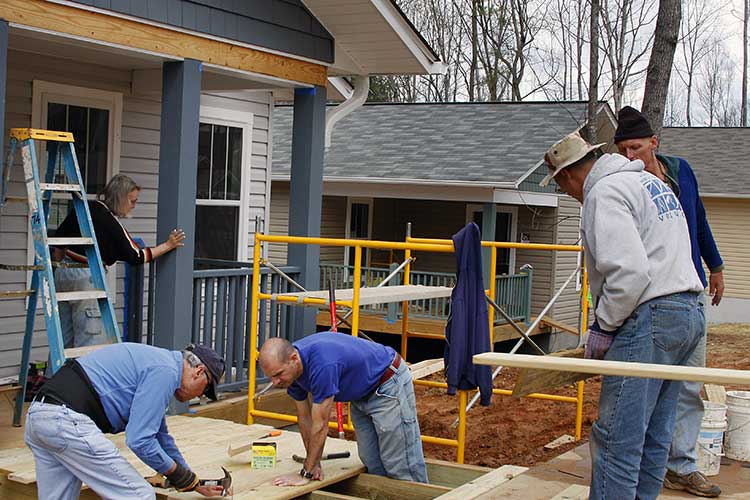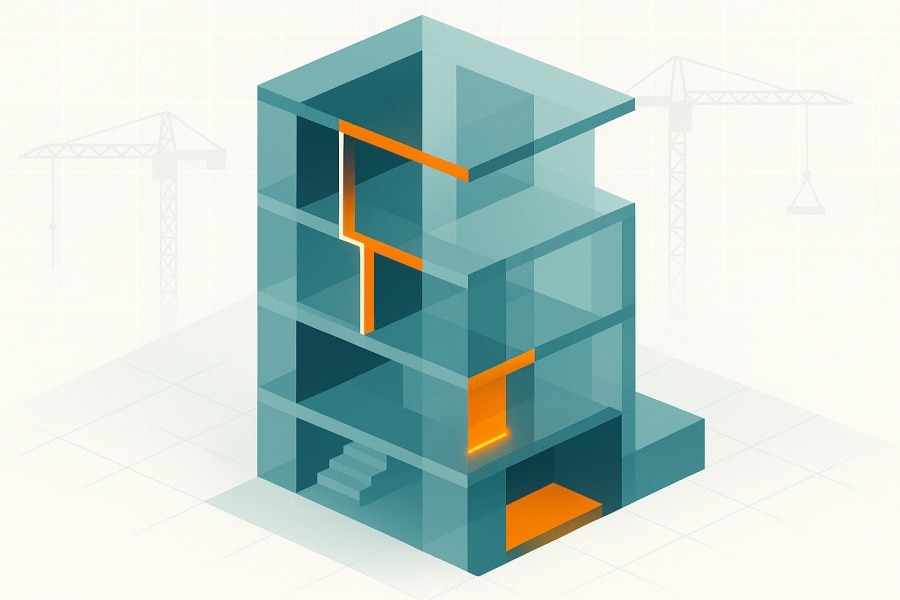In the 2017 historic wildfire season that saw historic damages across the American West, Sonoma County, California experienced some of the worst of it: more homes were destroyed there in a single day than had been built in the preceding 10 years. A truly breathtaking statistic, and one that compounded an already critical housing shortage in the state.
In light of such luck, one would understand if Sonoma residents had grown despondent, perhaps throwing in the towel or moving on to greener—or at least less natural disaster-prone—pastures. But nothing could be farther from the truth. Sonoma has come back stronger, with residents determined to build back better, stronger and smarter. And the Sonoma County Habitat for Humanity has led the charge.
The Sonoma County Board of Directors had begun exploring prefabricated solutions to the Sonoma County housing crisis back in 2016—before the wildfires. Nationwide, prefabricated housing is on the rise. The primary advantages to prefabricated housing are that it requires less labor, produces much less waste, and is less costly.
The 2017 wildfires were a jolt to the Sonoma County Habitat for Humanity, and the elevated demand for rebuilding in their aftermath only intensified the construction labor shortage in the area. In 2018, Sonoma County Habitat for Humanity’s Harris Village project in Santa Rosa became a pilot for building wall components in an offsite warehouse. Harris Village included three brand-new single family homes, and they served as a test case for off-site component manufacturing on those homes, which were later sold to proud new homeowners in April 2019. 2018 was also the launch year for the Sonoma Wildfire Cottages development—a unique pilot project where four different construction methodologies from different manufacturers of prefabricated homes or panelized construction were tested. It is an even larger pilot project; the nine cottages dedicated exclusively to wildfire survivors will be completed this summer, with an expected August move-in. The push toward a new prevailing business model will take time, but is expected to transpire over the next 3-5 years, with modular overtaking major segments of traditional construction within approximately 10 years.
Sonoma County Habitat for Humanity is well-positioned to make these forward-thinking moves. “Our Board of Directors and Habitat Center Advisory Committee includes professionals with backgrounds in prefab residential construction and factory operations for industrialized residential construction,” said Board Chair Tim Leach. “In addition to consulting regularly with Habitat affiliates who are running similar operations in Atlanta, Denver and Edmonton (Alberta, Canada), we are consulting with industry experts such as Katerra,” Leach continued.
Last year the organization decided to explore opening a factory to build modular homes as a way to shortcut the home building process. They consulted other Habitat affiliates, both domestically and abroad, that adopted and refined this model, and what emerged was the discovery that perhaps the single most important component needed to keep building “in-house” at Habitat was having sufficient volunteers. Given the dearth of laborers in the industry, wage growth commensurate with low supply, and a huge backlog of construction projects statewide, donated labor is integral to helping keep Habitat costs low and building times short for prospective homeowners.
The Habitat Center was launched in June 2019, as part of a partnership with the North Coast Builders Exchange/North Bay Construction Corps Boot Camp. About 60 members of the Corps from Sonoma and Napa Counties worked at the Center and two other Habitat build sites in Sonoma County. In mid-August 2019, the Santa Rosa Junior College construction training program will send its first cohort of students to the Center for both classroom instruction and hands-on training in modern construction methodologies. The first wall panels for installation at Habitat Sonoma County build sites are anticipated to be completed by fall 2019.
It’s an exciting, though not easy, road ahead: Leach believes the two biggest challenges the organization will face in the next two years are “recruiting the skilled and unskilled staff and volunteers we need to achieve our expanded build capacity, and continuing to expand the circle of sponsors and donors who contribute materials, labor and funding to close the affordability gap for Habitat homeowners.” The Sonoma County Habitat for Humanity welcomes the challenge: “The homeowners are the folks who keep our community running—medical assistants, daycare workers, winery staff, teachers’ aides, emergency responders. We need to make sure they can continue living and working here and create real futures for their families while they do.”











